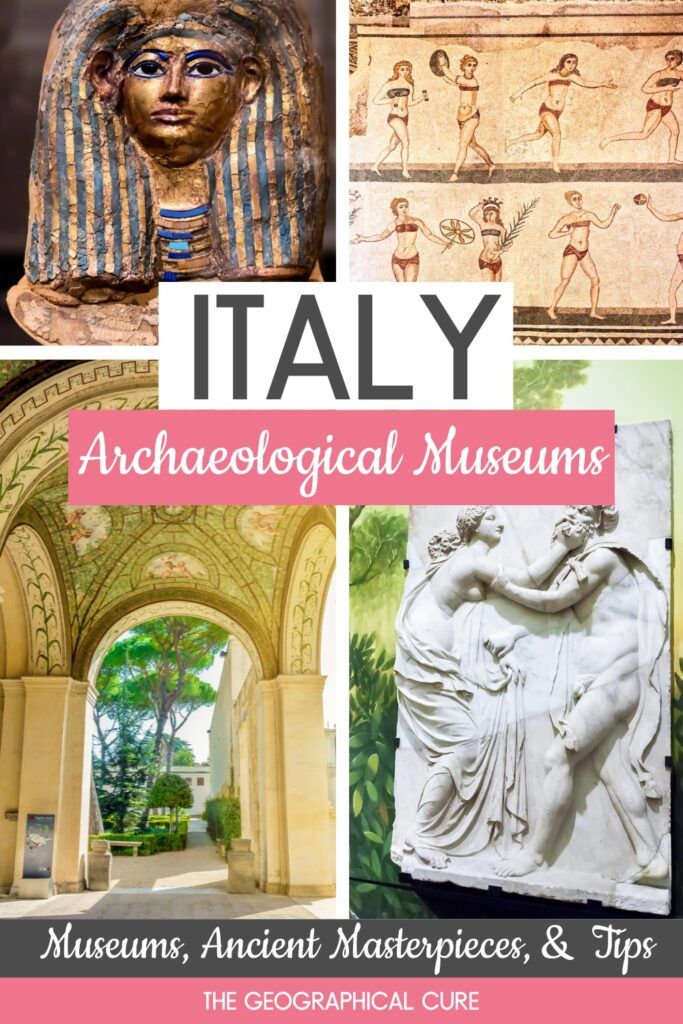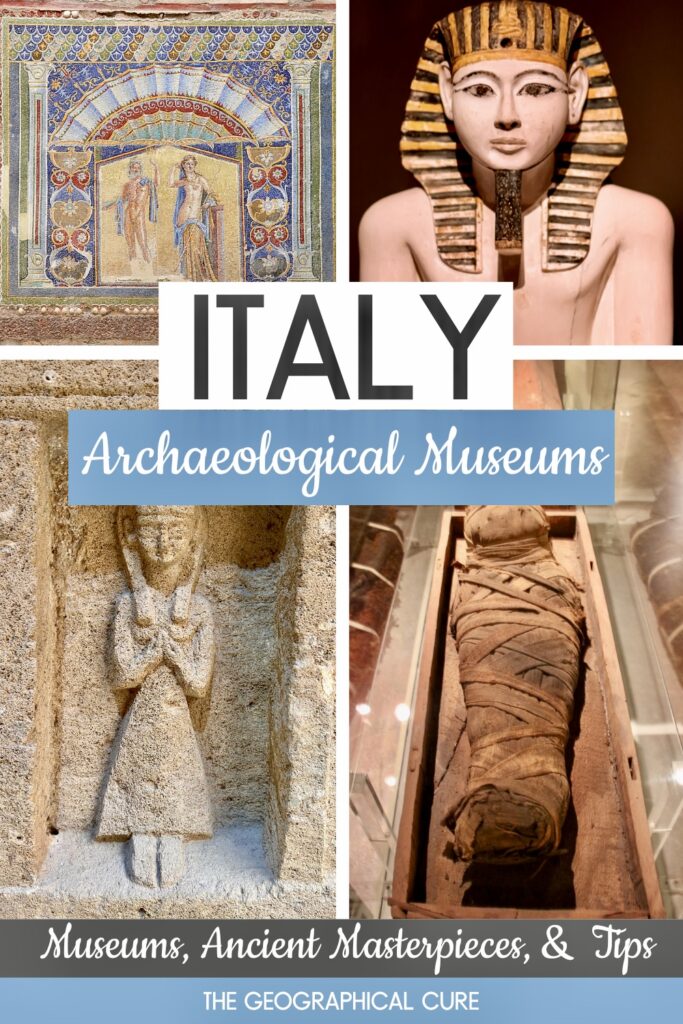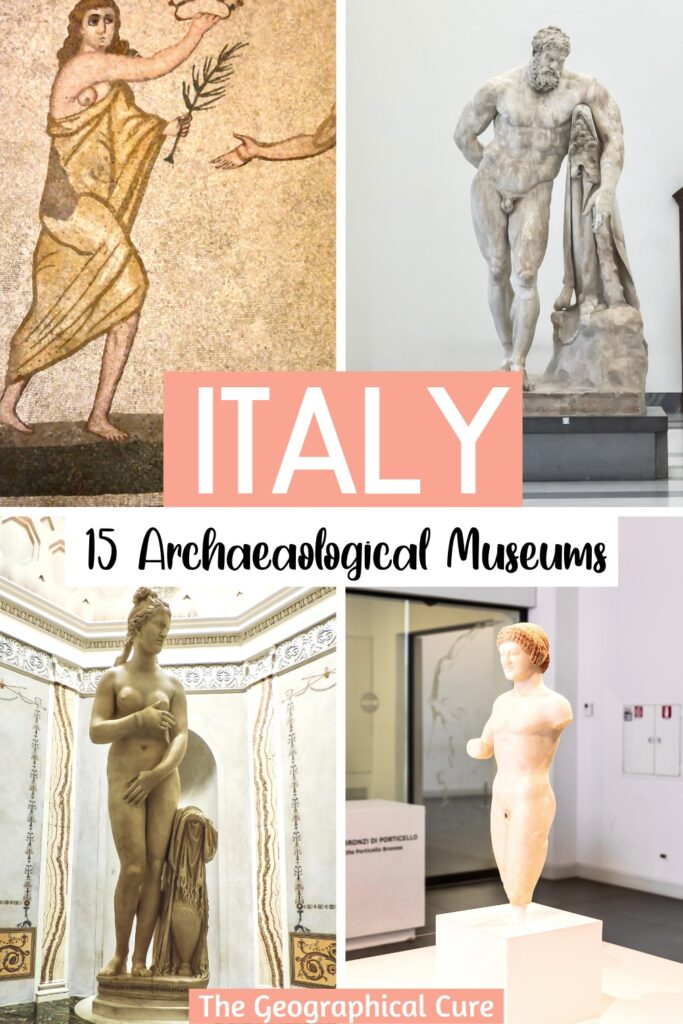Are you a history buff traveling to Italy? Italy is home to some amazing archaeological museums where you can explore the country’s storied past.
Archaeological museums are institutions that protect and preserve archaeological artifacts and site remains.
But archeological museums aren’t just about ancient objects. The objects are pieces of the puzzle and help to explain what life was like in the past.
In Italy, you’ll find archaeological museums chock full of art and artifacts from the dawn of time — the Phoenician, Etruscan, Roman, and Greek eras. They offer a fascinating window into Italy’s history and make art and ancient culture come to life.
Archaeological Museum In Italy
Here’s my list of the best archaeological museums in Italy and their must see masterpieces.
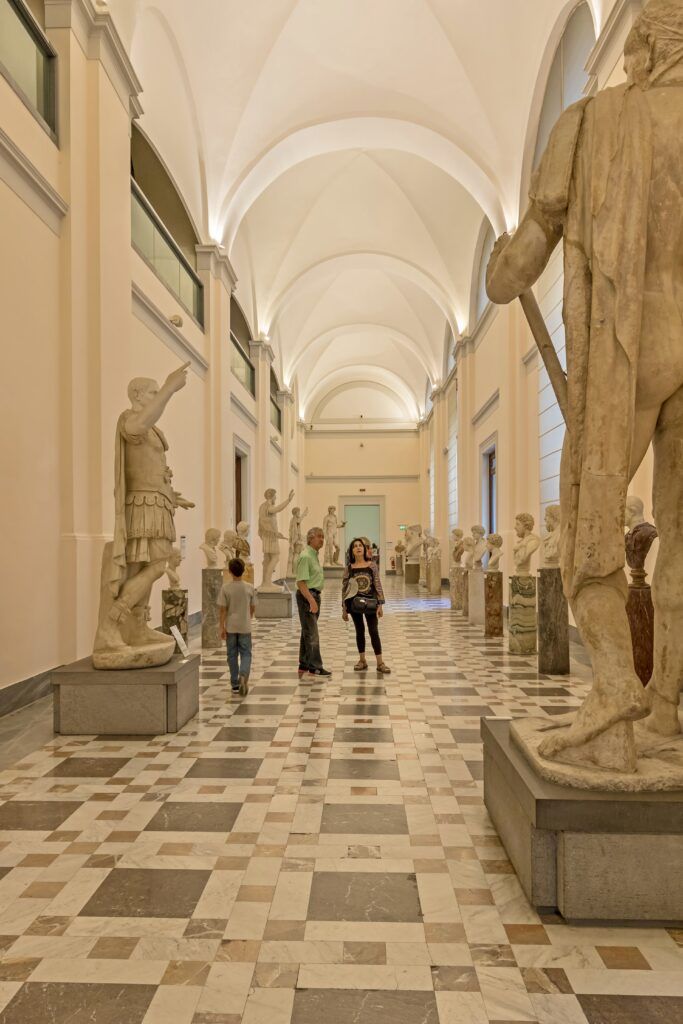
1. Naples National Archaeological Museum, Naples
MANN is hands down the best archaeological museum in Italy. MANN boasts an absolutely spectacular collection of antiquities that is sure to delight all ages.
The museum boasts an extensive collection of artifacts from ancient Greece, Rome, and Egypt.
The undisputed highlight is a rare assortment of relics excavated from Pompeii and Herculaneum, the two cities destroyed by the eruption of Mount Vesuvius in 79 AD and frozen in time.
The remarkably preserved artifacts from the sites offer a glimpse into the daily life and society of ancient Roman cities. They include colorful mosaics, a plethora of frescoes, and everyday objects.
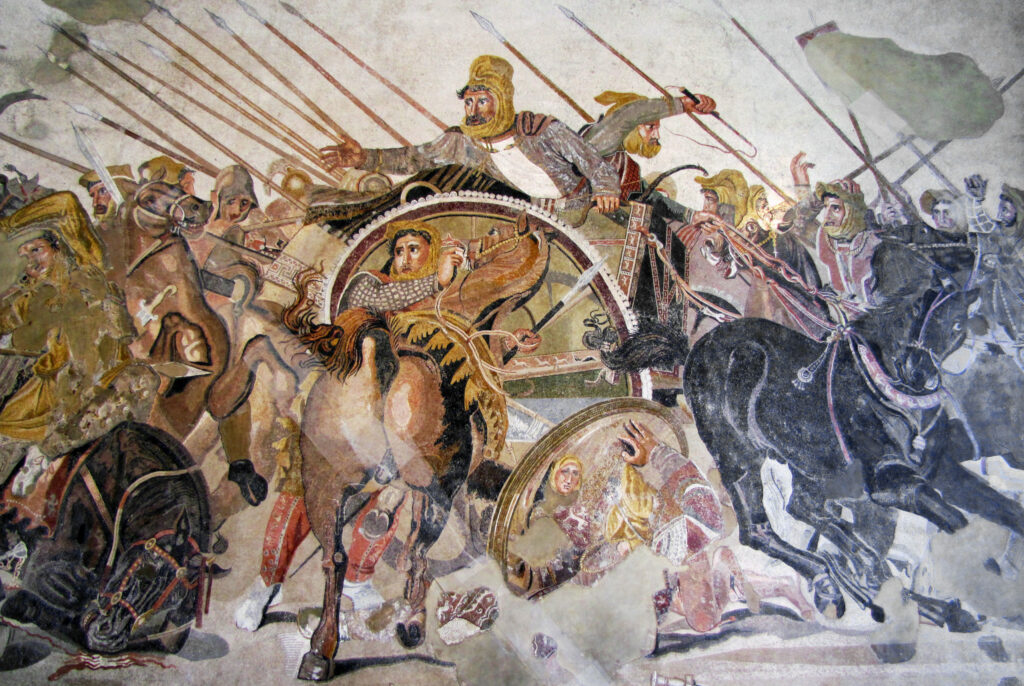
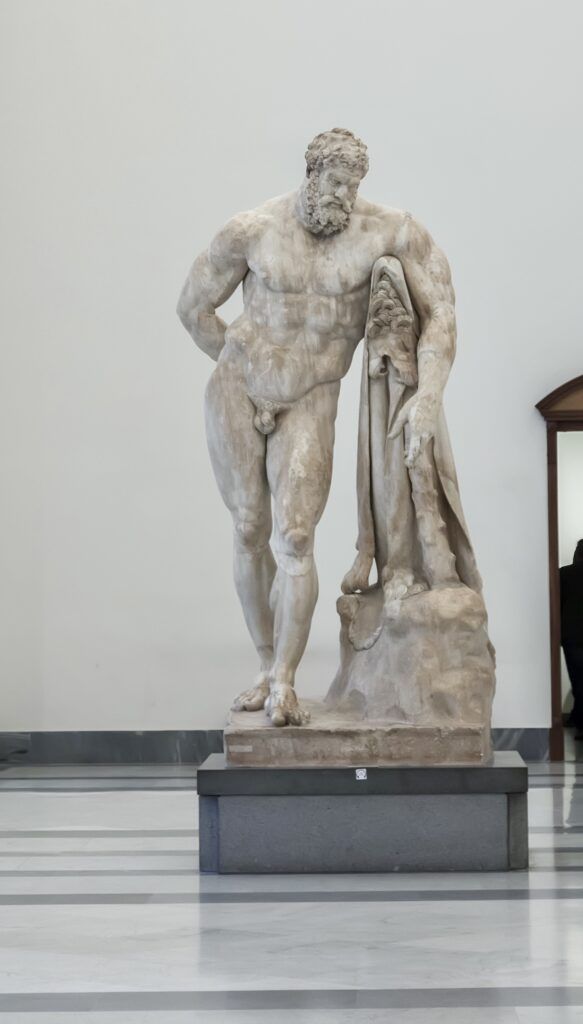
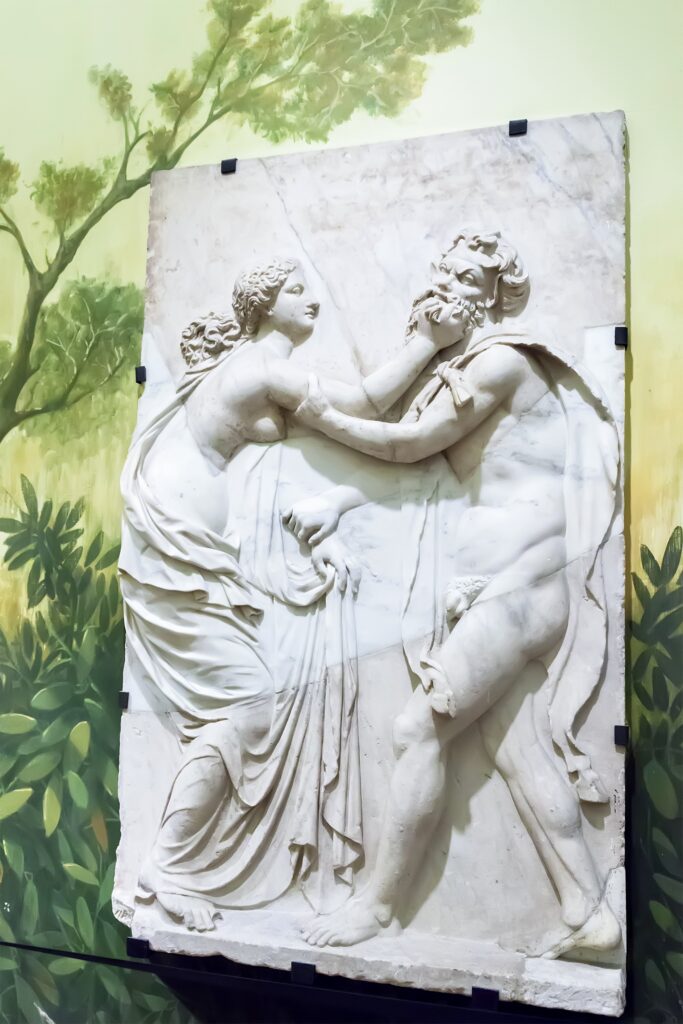
The museum’s amazing Farnese Collection is also magnficent. It includes a diverse range of sculptures, reliefs, and other archaeological finds.
It boasts some of the world’s most famous classical sculptures, such as the Farnese Bull and Farnese Hercules. You can also see a who’s who of busts of the Roman emperors.
Whether you’re a Roman enthusiast, history aficionado, art connoisseur, or simply curious about the past, the Naples Archaeological Museum is a must visit in Italy, a place where the ancient world comes to life.
For more information and tips for visiting, here’s my complete guide to MANN.
>>> Click here to book a skip the line ticket to MANN
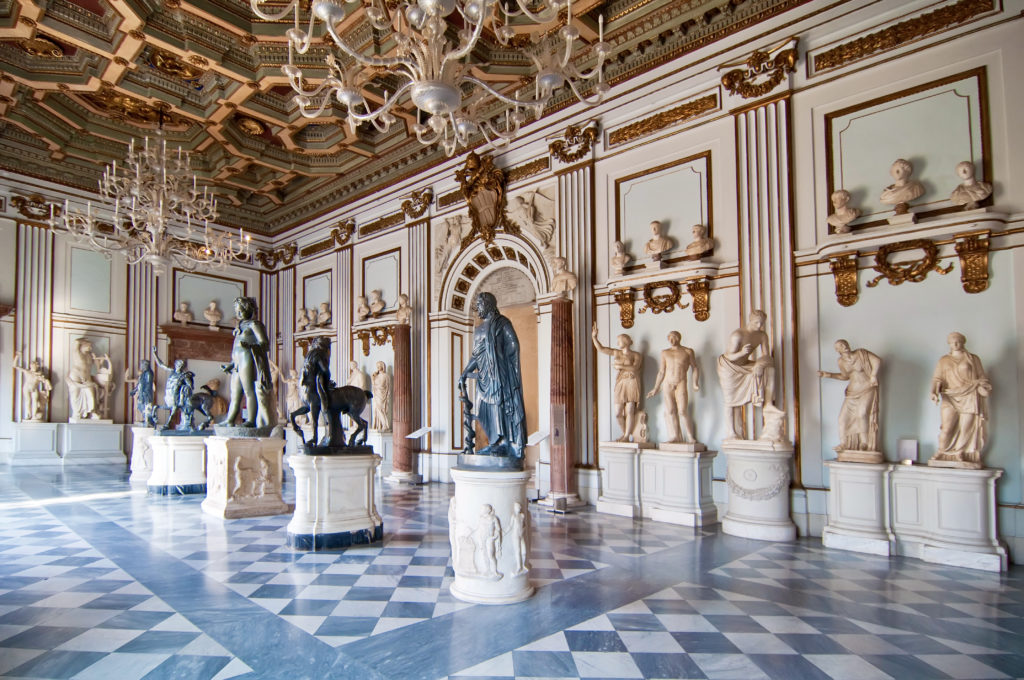
2. Capitoline Museums
Perched atop Capitoline Hill, the Capitoline Museums are Rome’s oldest museum complex, gracing the Michelangelo-designed Piazza dei Campidoglio. The Capitoline is truly one of the best museums in Rome.
For history and archaeology enthusiasts, this site offers an unparalleled glimpse into Rome’s ancient imperial past.
The museum is housed within the Palazzo dei Conservatori and the Palazzo Nuovo. The two buildings are connected by an underground passageway, the Underground Galleria Lapidaria, which is adorned with funereal steles.
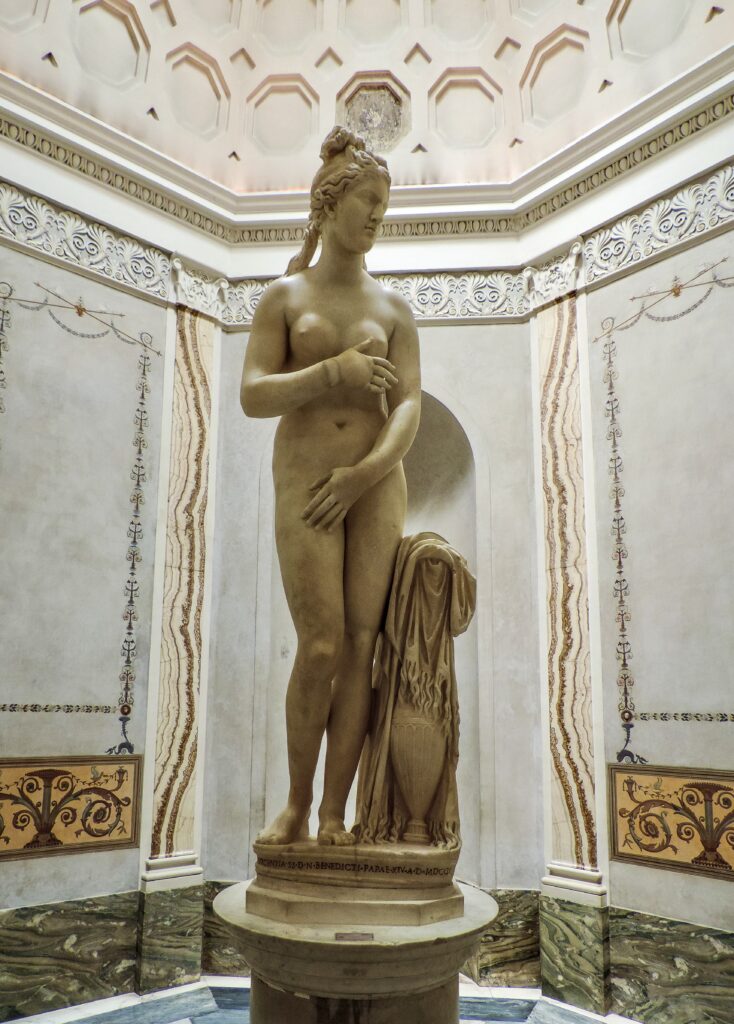
The museums boasts an extensive collection spanning ancient Roman, Medieval, and Renaissance art — statues, paintings, relics. The most famous pieces are Dying Gaul, Capitoline Venus, Spinario, and Bust of Commodus as Hercules.
The museum’s biggest showstopper is the Equestrian Monument to Marcus Aurelius. It’s the only surviving equestrian monument from ancient Roman times.
In high season, you’ll want to pre-book a skip the line ticket. You also have free entry with the Rome Pass.
Because the museum is so vast, you may also want to book a guided tour. Or, if you’re a real ancient history buff, book a private tour.
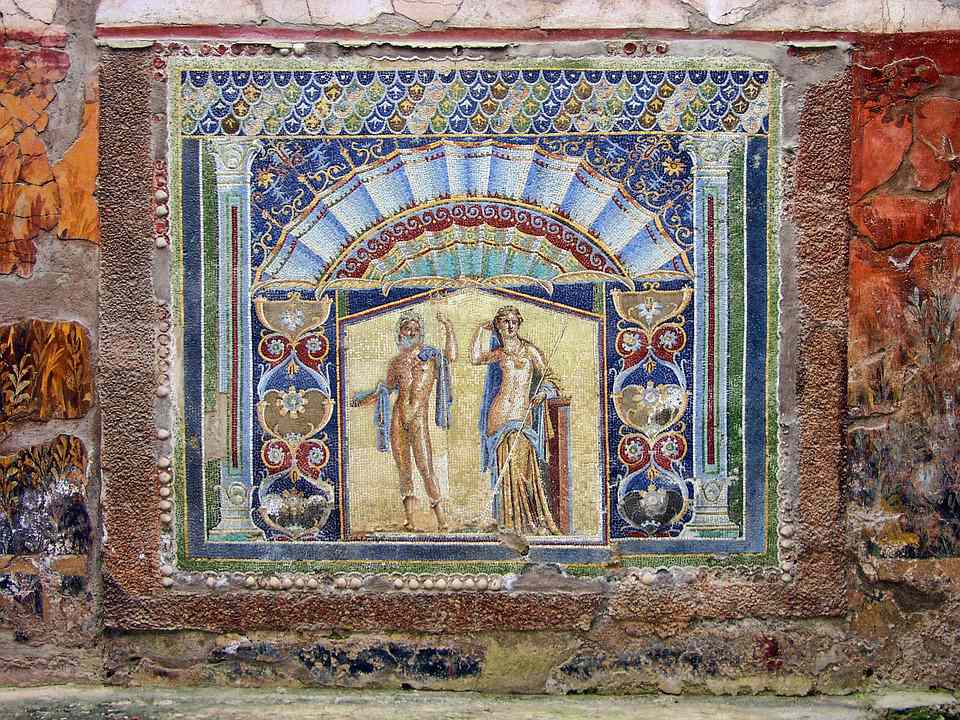
3. Herculaneum Antiquarium
Herculaneum is an ancient Roman town located near Naples in southern Italy. As I mentioned, along with Pompeii, it was buried by the eruption of Mount Vesuvius. The city was frozen in time by the volcanic ash and lava, preserving many aspects of daily life in ancient Rome.
In 2018, a museum was opened to house artifacts and relics excavated from the site and the nearby town of Boscoreale. It’s known as the Antiquarium.
The museum is housed in a modern structure designed by a trio of architects from Naples. It houses a collection of artworks including pottery, jewelry, frescos, household objects, and other artifacts unearthed during excavations in the area.
The museum gives you a deeper understanding of the culture and lifestyle of the Roman inhabitants before the catastrophic eruption.
>>> Click here to book a tour of Herculaneum with an archaeologist
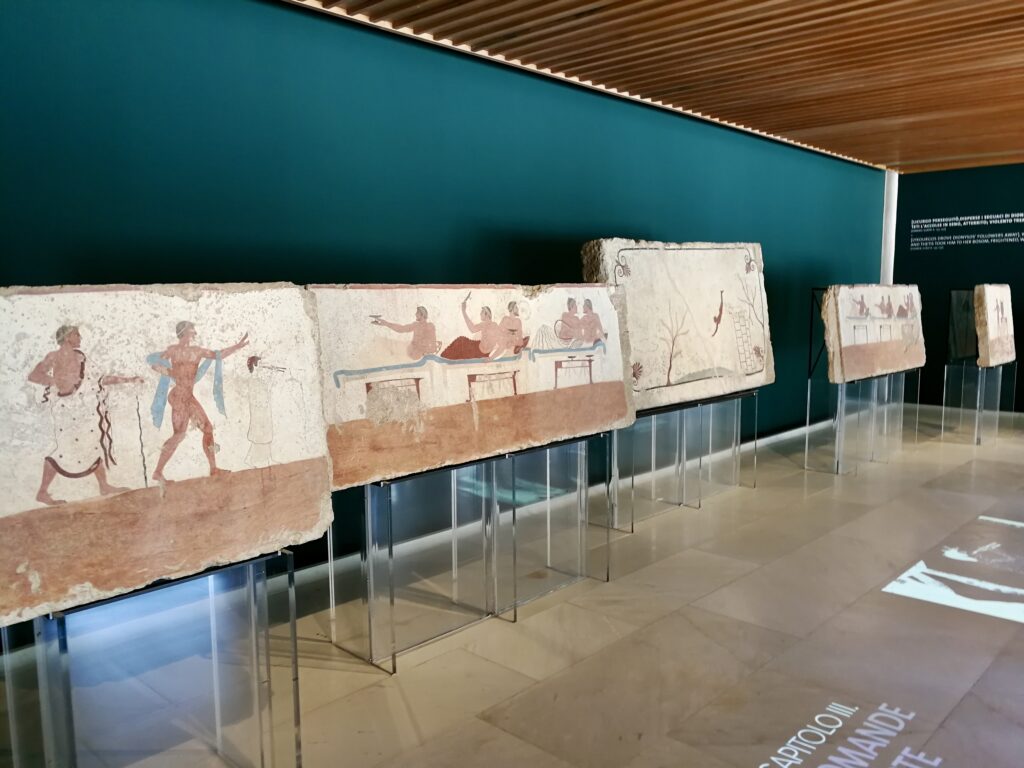
4. Archaeological Museum Of Paestum
The Paestum Archaeological Museum in Campagna is an absolute must-see! It’s a fantastic archaeological museum in Italy. You can reach it on a day trip from the Amalfi Coast.
Established in 1952, the museum sits conveniently near the entrance to the main site, where you can see three magnificent Greek temples.
The museum is a repository for archaeological treasures unearthed during centuries of excavation at Paestum. It’s divided into sections, each shedding light on different aspects of Paestum’s rich history from its prehistoric roots to the Greco-Roman era.
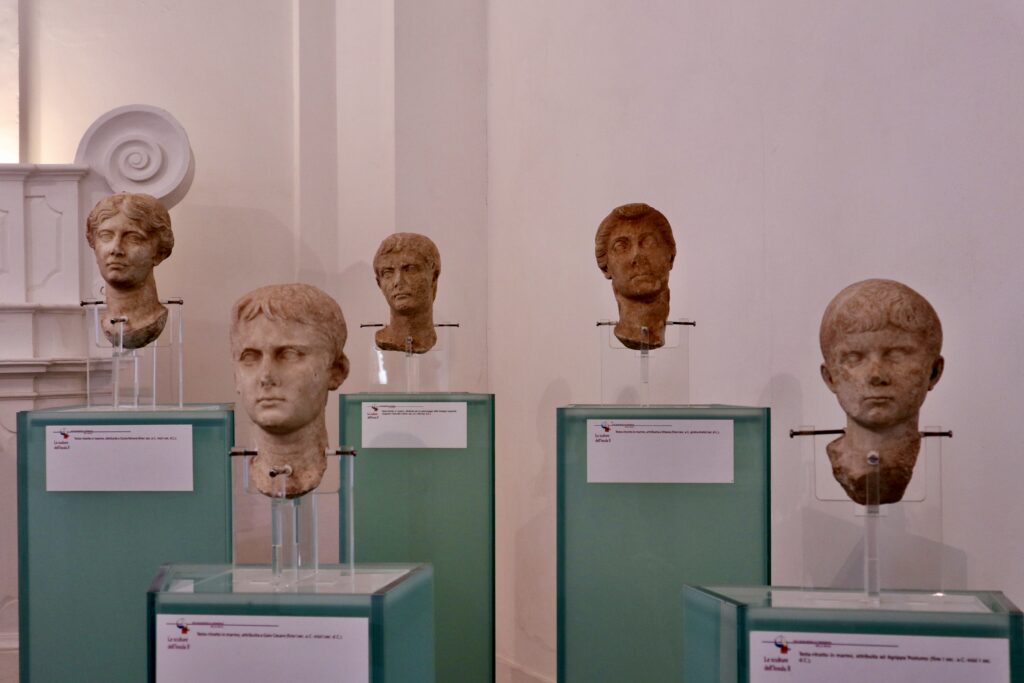
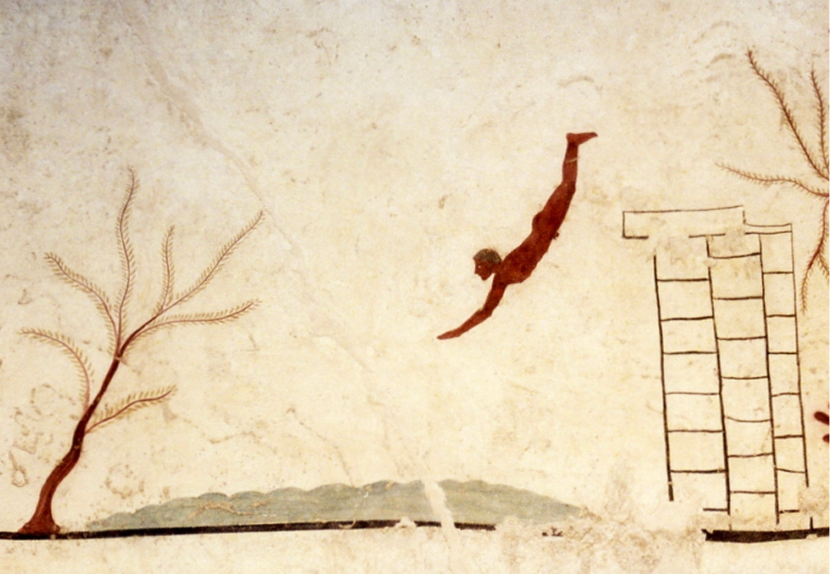
Within its walls, you’ll find a diverse array of artifacts, including Greek statues, terracotta pieces, pottery, ancient coins, exquisite jewelry, and captivating tomb paintings.
The star of the museum is the Tomb of the Diver, an ode to eternity. Crafted from five limestone slabs, this enigmatic tomb features four walls and a ceiling image of young man gracefully diving into a stream of water, almost into the unknown.
These paintings are unique and very significant because they represent the only known surviving ancient Greek frescoes with figurative imagery from this period.
Another standout highlight is the frieze from the Sanctuary of Hera. It features mythological scenes that once enchanted a 6th century BC audience.
For more information, here’s my complete guide to visiting Paestum.
>>> Click here to pre-book a Paestum ticket
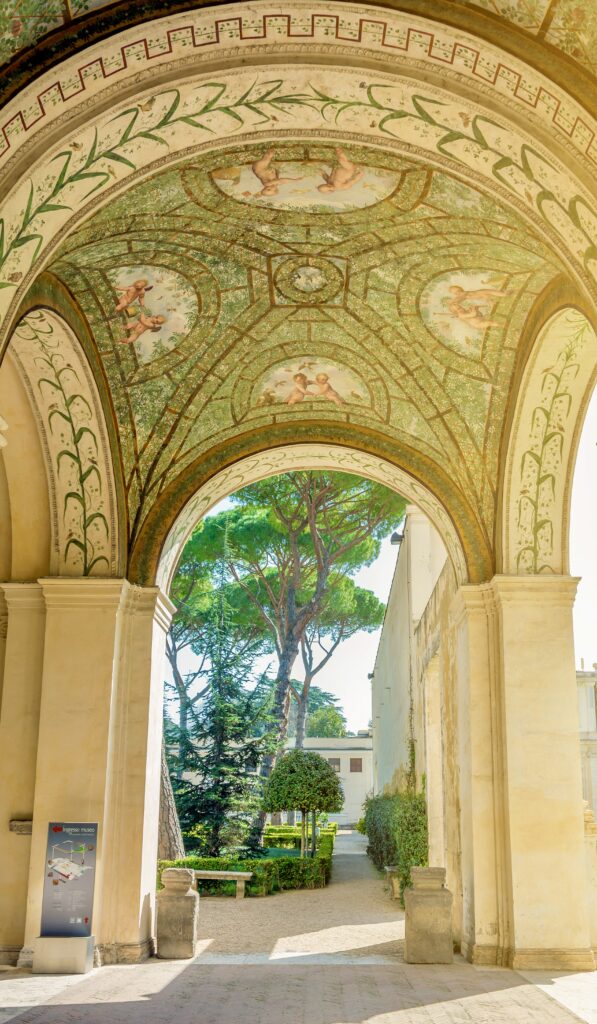
5. Villa Giulia | National Etruscan Museum, Rome
If you’re fascinated by the enigmatic Etruscans who thrived around 600 BC, a must-visit archaeological museum in Italy is the Museo Nazionale Etrusco di Villa Giulia, located within the beautiful Villa Giulia.
Villa Giulia was originally constructed in the 16th century as a luxurious retreat for Pope Julius III. It saw contributions from several architects, including design advice from the famous Michelangelo.
Inside the museum, you’ll encounter the world’s most extensive collection of Etruscan artifacts.
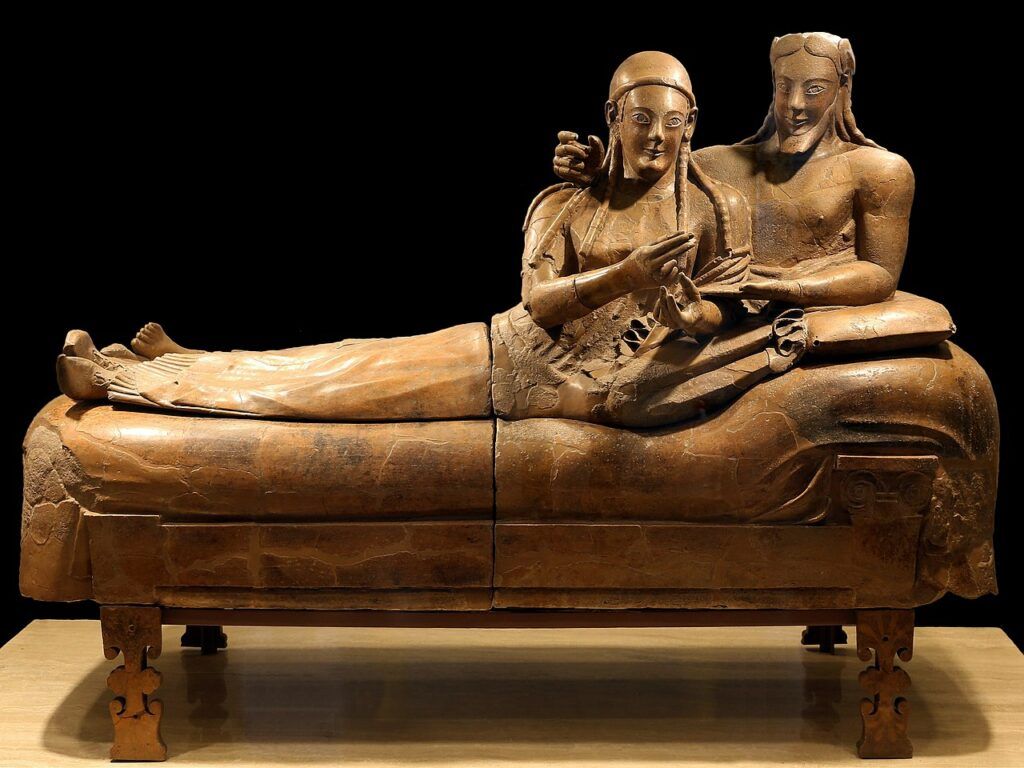
You’ll be amazed by the exquisite gold jewelry, ornate urns, and statuary.
Down miss the renowned Sarcophagus of the Spouses, the Apollo of Dei sculpture from the 6th century B.C., and the mysterious Pyrgi Tablets, an ancient form of Etruscan writing that remains undeciphered to this day.
There’s also a reconstructed Etruscan temple nestled in the villa’s gardens. In all, the museum is a remarkable journey into the world of the Etruscans and their artistic legacy.
Click here to book a skip the line ticket. If you are a fan of Etruscan history, click here to book a guided tour of the museum.
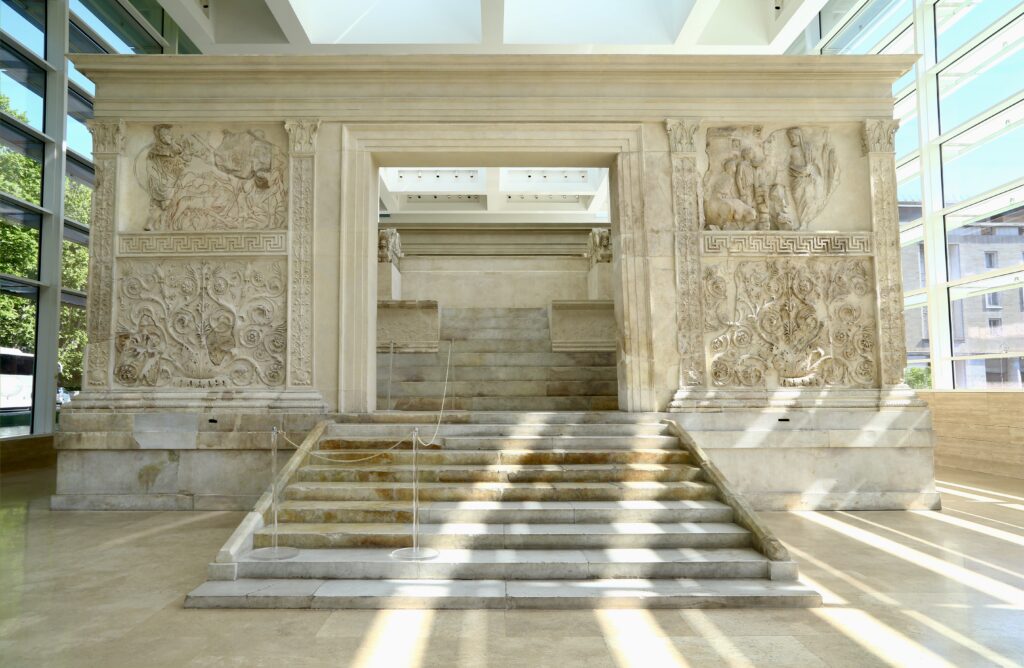
6. Ara Pacis, Rome
In 13 BC, the Ara Pacis, also known as the Altar of Peace, emerged under the auspices of the Roman Senate. This monumental altar served as a tribute to the reign of Emperor Augustus, commemorating his triumph over and pacification of the barbarian forces.
This pivotal victory signified the beginning of the Pax Romana, a peaceful epoch spanning two centuries that saw a flourishing of arts and architecture across the Roman Empire.
Originally part of an expansive complex, the Ara Pacis monument found its way to its present location in 1938. In a bid to honor this remarkable monument, the Ara Pacis Museum came to life in 2006, singularly dedicated to preserving its legacy.
It’s hosted in a modern pavilion designed by renowned American architect Richard Meier. The synergy of ancient history and contemporary design creates a unique space that invites visitors to delve into the grandeur of the past.
READ: Guide to the Ancient Art Collections of Rome
7. Palatine Museum, Rome
The Palatine Museum is a hidden gem in Rome on Palatine Hill. Spread over two floors, it’s a small, but wonderful, archaeological museum in Italy.
The museum tells the story of this historic hill, where the ancient Roman aristocracy once lived. Inside, you’ll discover a variety of treasures found during excavations here — statues from the imperial palaces, bits of palace decorations, frescoes, columns, and friezes.
You can even see a model of the Huts of Romulus, as well as various busts and statues. Plus, there’s a fascinating historical video.
One special highlight is a rare surviving bust of Emperor Nero, who was almost erased from history. Don’t forget to check out the ancient statue of Magna Mater, the Great Mother, believed to bring fertility to the Romans.
In another part of the museum, you’ll come across an “angel” sculpture with wings from a Victory statue, as well as fresco fragments and marble remnants from Nero’s palaces.
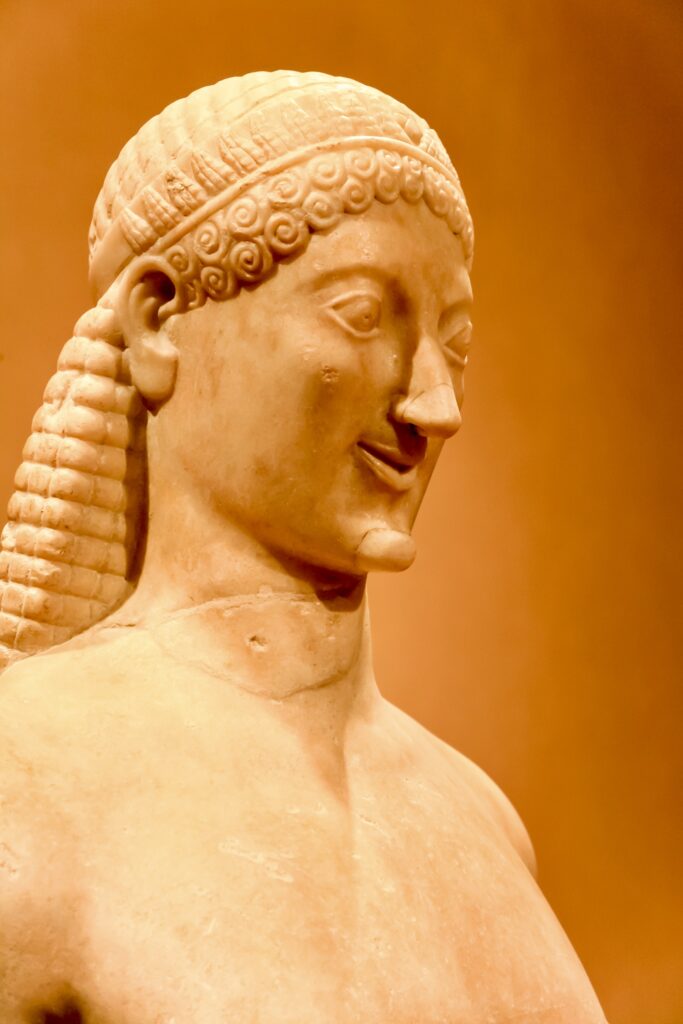
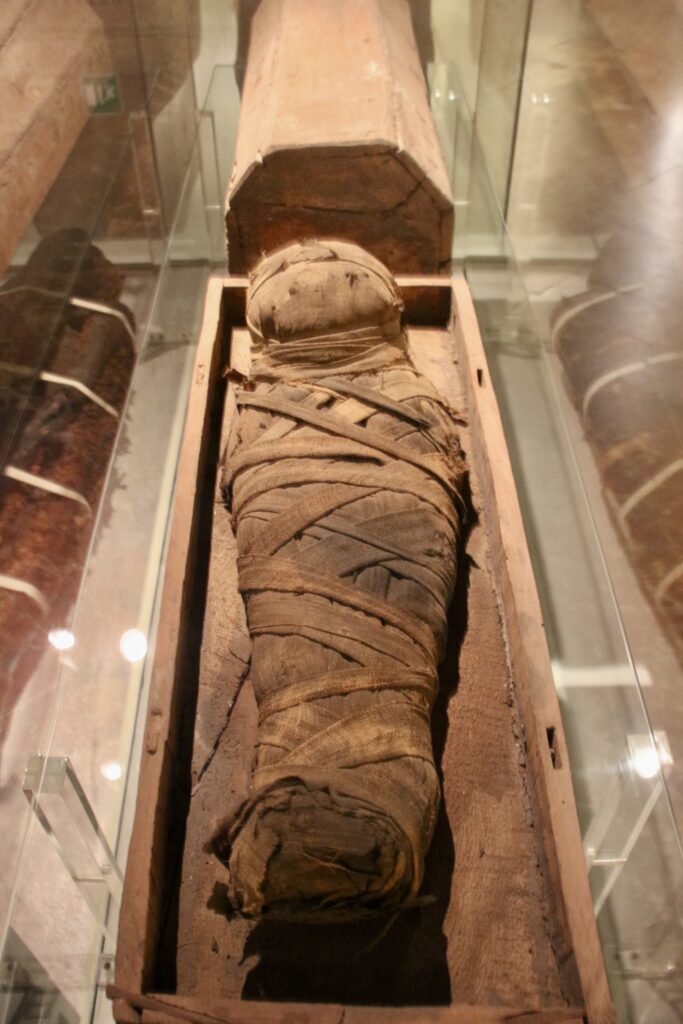
8. National Archaeological Museum, Florence
The National Archaeological Museum of Florence is located right in the heart of the city. It’s a prominent archaeological museum in Italy dedicated to the preservation and exhibition of archaeological treasures from various ancient cultures.
It houses a fantastic Etruscan collection. There’s a wide array of artifacts, including pottery, bronze objects, jewelry, and tombs.
The museum also houses an extensive Roman antiquities section. It features sculptures, mosaics, and inscriptions that provide glimpses into ancient Roman life.
Egyptian enthusiasts can explore an impressive collection of mummies, statues, and funerary objects, making it one of Italy’s largest Egyptian sections.
The museum is also home to Greek and Hellenistic art, including sculptures and pottery. They showcase Greece’s influence on Mediterranean cultures.
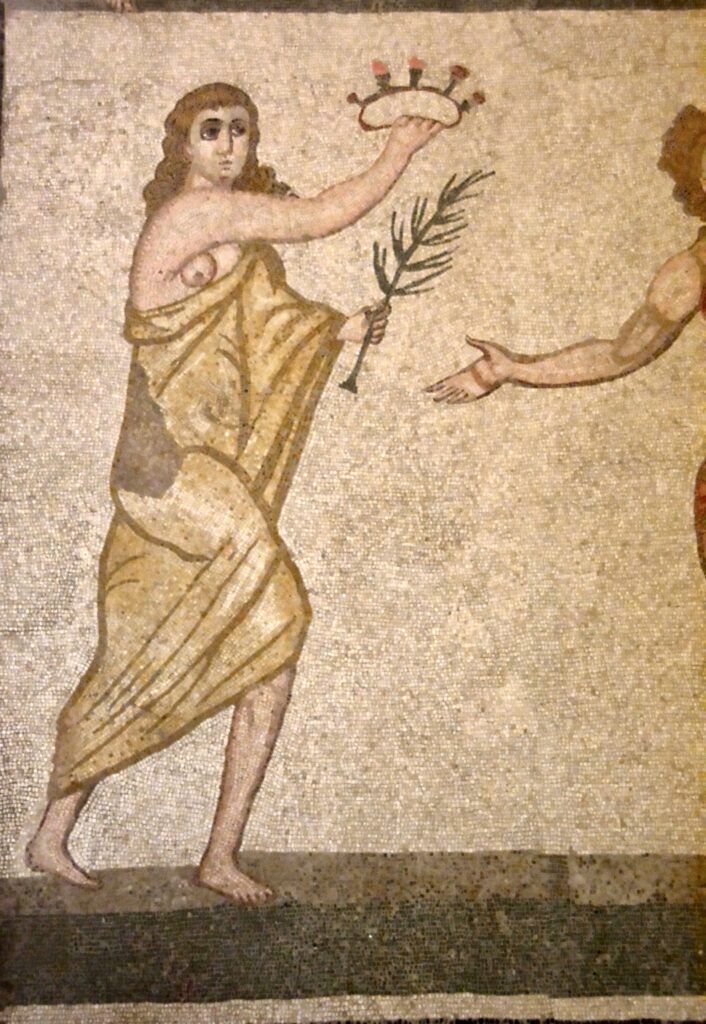
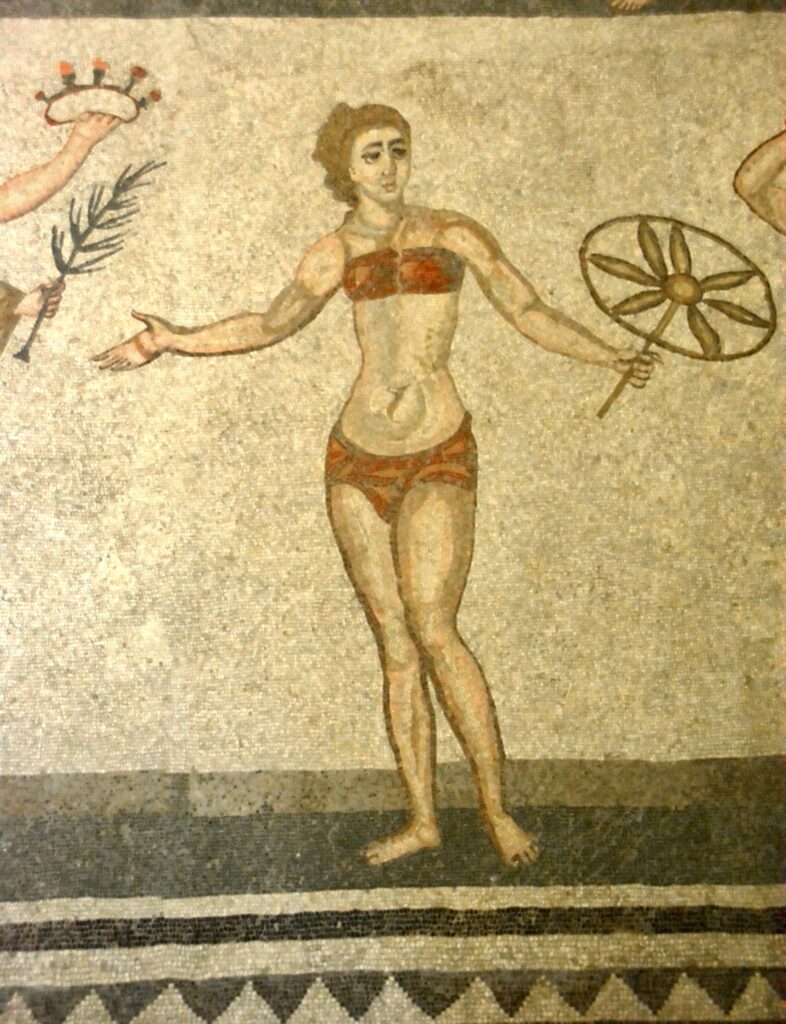
9. Villa Romana del Casale, Piazza Armerina
The UNESCO-listed Villa Romana del Casale is an ancient Roman country villa in southern Sicily. It was built by Roman elites in the 4th century and is a true mosaic wonderland.
The villa boasts the boasting the world’s largest collection of Roman mosaics in their original spots — covering a whopping 3,700 square feet.
The mosaics are not only remarkably well-preserved but also astonishingly detailed. They offer a glimpse into the ancient world’s artistry.
In this archaeological museum in Italy, you can step into a time capsule that lets you see how the wealthy Romans lived lavishly. Picture them, draped in togas, convening for political discussions in their grand boardroom.
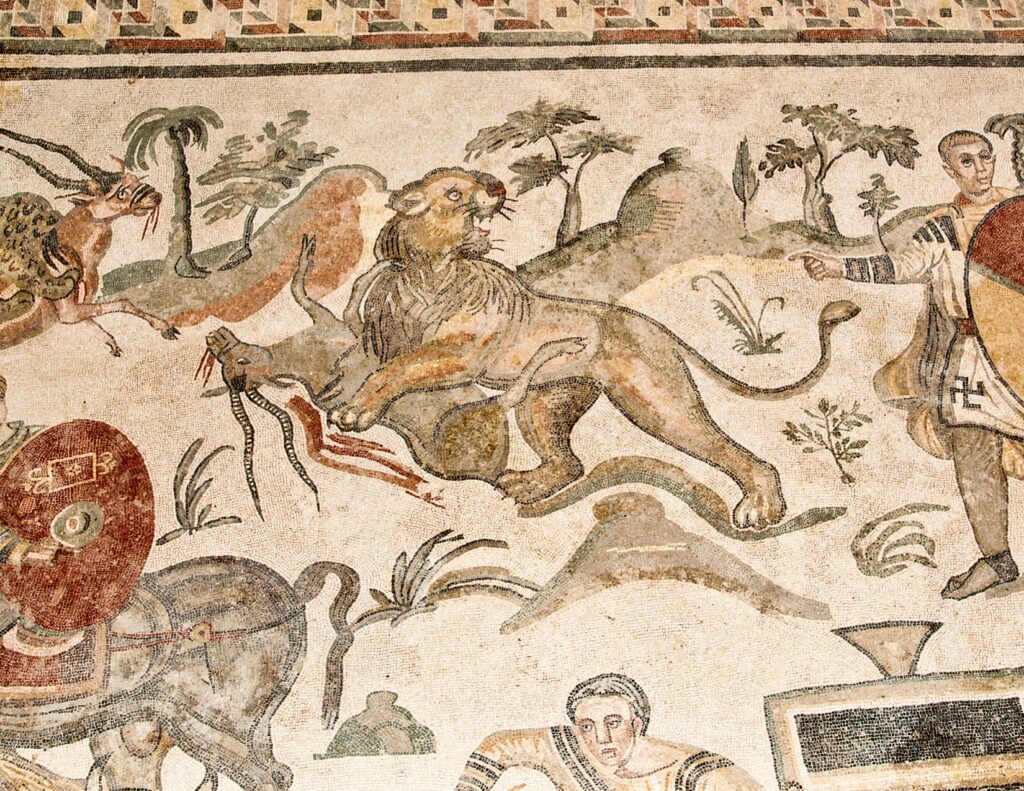
The real showstopper is the Ambulatory of the Great Hunt. It’s a majestic hall showcasing the owner’s trade and the Roman fascination with exotic animals.
You’ll see exotic and mythical creatures, such as lions, leopards, tigers, elephants, and even fantastical creatures like griffins. You’ll also see hunters in action, using nets, spears, and other tools to capture wild animals.
And don’t miss the gymnasium, home to the famous “Bikini Girls” mosaic, officially known as the “Coronation of the Winner.” These ten young ladies in what looks like ancient workout attire prove that fashion hasn’t changed much in 2,000 years.
You can visit the villa on a guided tour from Catania, from Agrigento, from Palermo, or from Taormina.
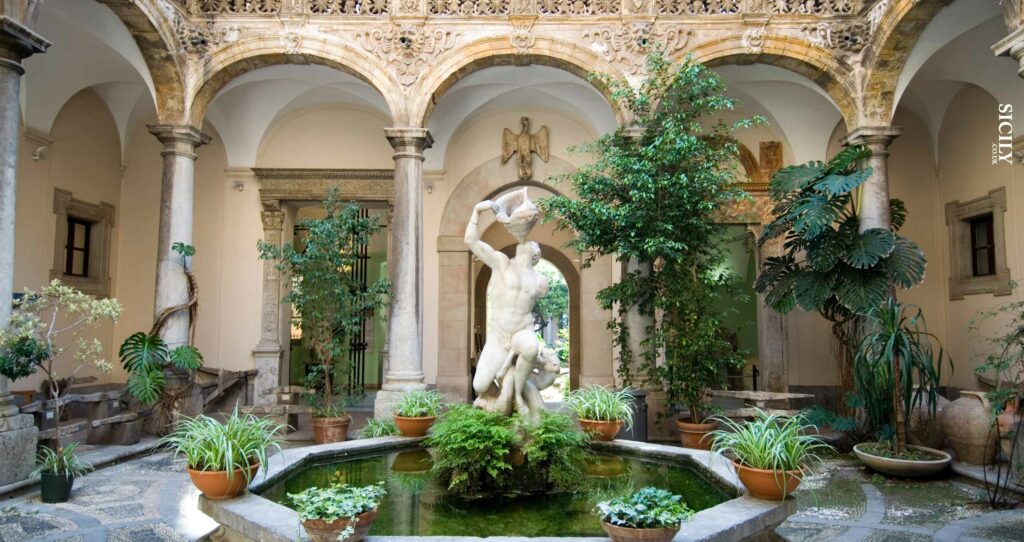
10. Salinas Archaeological Museum, Palermo
The Salinas Archaeological Museum in Palermo is a true gem and one of the best archaeological museums in Italy. After an extensive 10 year renovation, it reopened its doors in 2017. It serves as a window into Palermo’s rich historical tapestry.
Within its extensive collection, you’ll encounter a treasure trove of Greek, Roman, and Phoenician artifacts. The museum also displays relics from the ancient temples of Selinunte, perched along Sicily’s southern coast.
While here, be sure to marvel at the Bronze Ram, the Torso of Stagnone, and the Selinute metopes — each a testament to ancient craftsmanship and artistic prowess.
And don’t overlook the grandeur of the Fountain of Triton om the entrance courtyard or the Palermo Stone in the small cloister. This remarkable stone played an essential role in shaping our understanding of the chronology of ancient Egyptian Pharaohs.
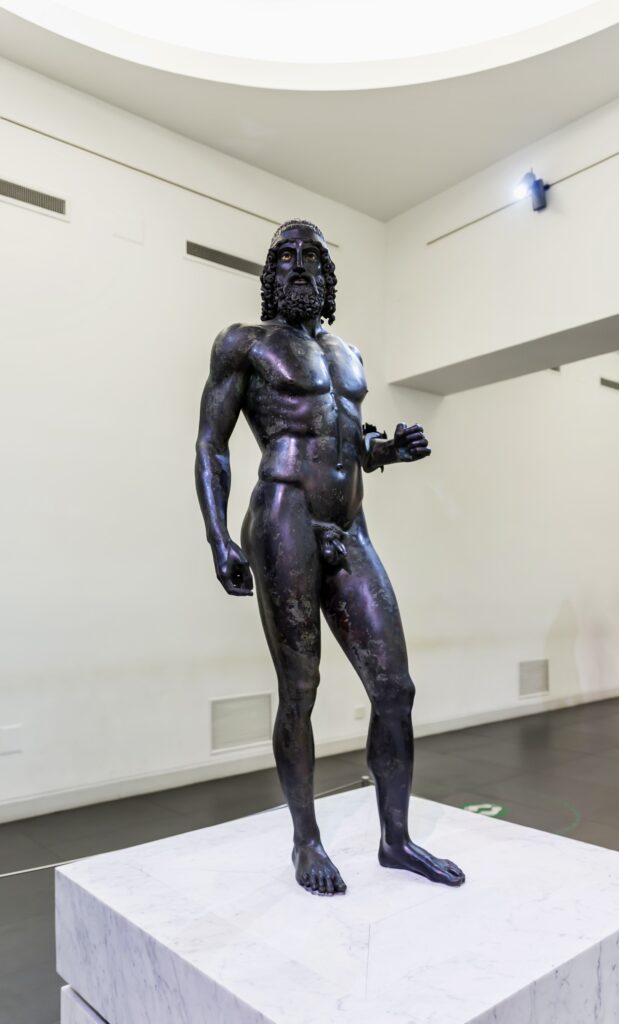
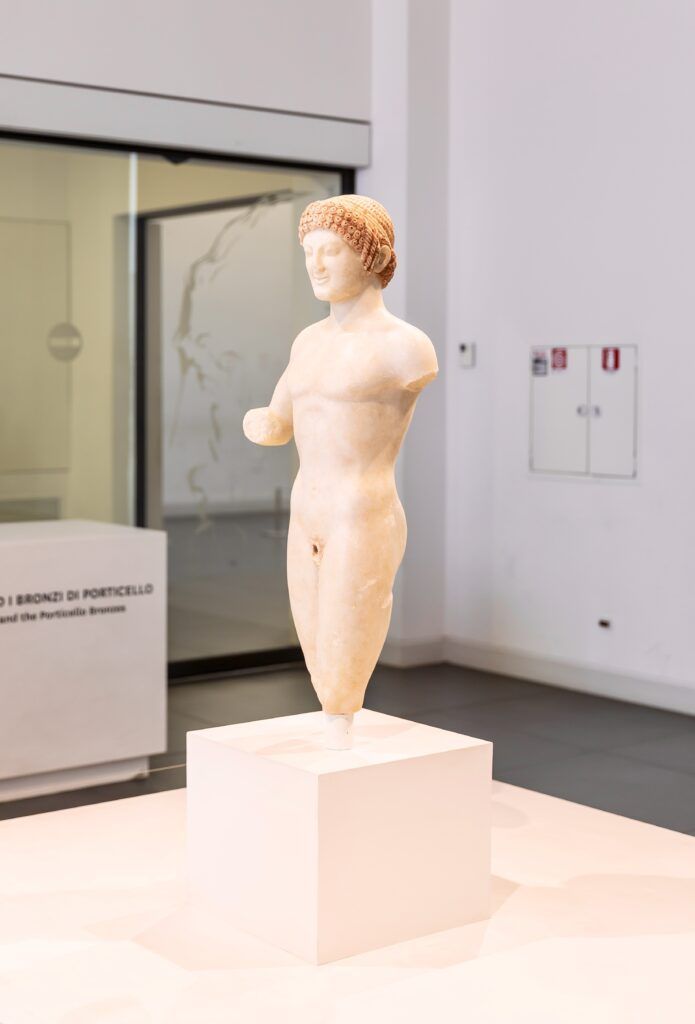
11. National Museum of the Magna Grecia, Reggio Calabria
The National Archaeological Museum of Reggio Calabria in southern Italy is renowned for its vast collection of ancient artifacts.
Established in the late 19th century, the museum boasts an impressive array of Greek and Roman art and archaeological artifacts. They give visitors insight into the rich history and culture of Magna Grecia (Greater Greece).
Notably, it houses the Riace Bronzes, two life-sized ancient Greek statues from the 5th century BC. They were famously discovered in the sea near Riace in 1972.
Another must see is the Reggio Kouros. It’s a pario marble sculpture whose name (kouros) comes from the Greek word for child. It’s a term used to denote a class of nude male statues in a frontal position, with arms outstretched to the sides and one leg forward.
The museum’s exhibits also include ancient pottery, coins, jewelry, sculptures, and artifacts, offering a glimpse into the rich history, culture, and craftsmanship of Magna Grecia. You’ll find informative displays and fantastic views of the Strait of Messina.
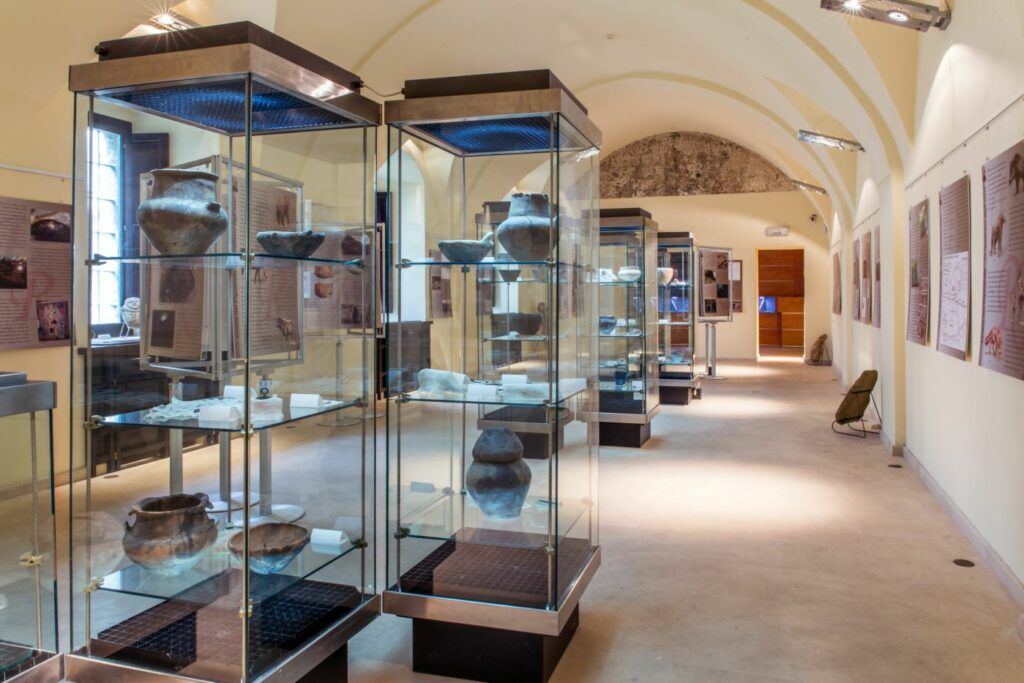
12. Ridola National Archaeological Museum, Matera
Madera’s Archaeological Museum is named after Domenico Ridola, a prominent archaeologist and scholar. The museum is the oldest museum in the Basilicata region. It’s dedicated to preserving and showcasing its rich archaeological heritage.
The museum’s collections include artifacts from the prehistoric, ancient, and medieval periods. They give visitors with insights into the history and cultural development of Matera and the surrounding areas.
You can expect to see archaeological finds such as pottery, tools, sculptures, and artifacts that offer a glimpse into the daily life, art, and craftsmanship of past civilizations that inhabited the region. The highlight is the Greek artifacts, dating back to the 6th and 5th centuries BC.
The museum is an excellent place to explore Matera’s history and cultural heritage, making it a valuable resource for both tourists and researchers interested in the area’s archaeology and history.
READ: 2 Days in Matera Itinerary
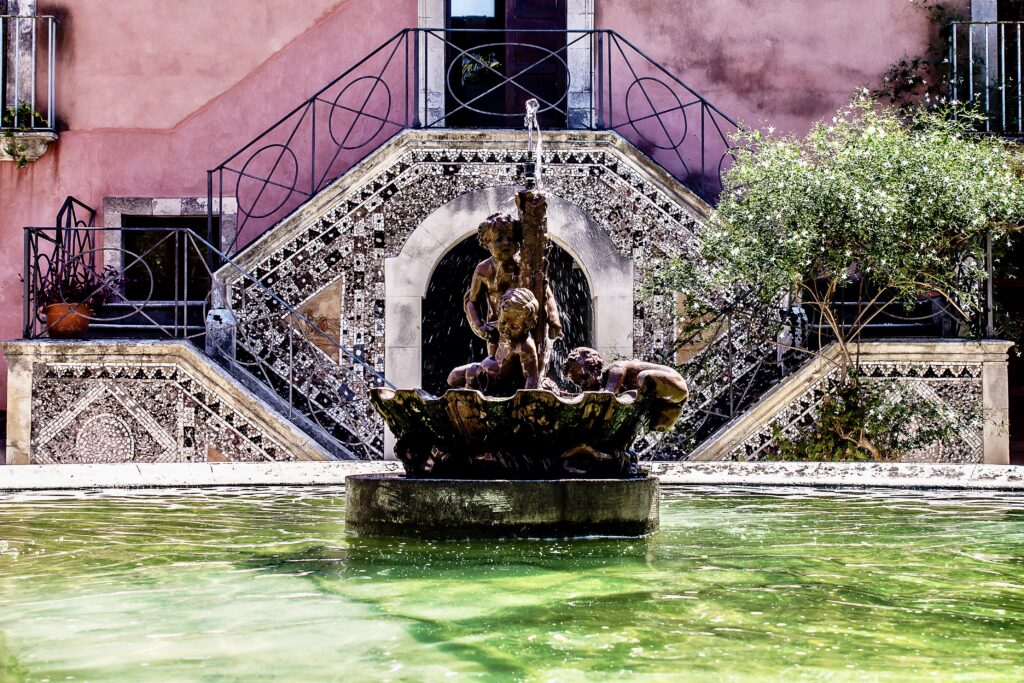
13. Museo Archeologico Regionale Paolo Orsi, Syracuse
Opened in 1988, the Paolo Orsi Museum in Syracuse stands as a premier archaeological museum in Italy. It occupies a modern two story building with a distinctive architectural style.
Within its walls, it explores Syracuse’s evolution from its its golden Greek era and onward. The museum’s extensive collection encompasses artifacts spanning epochs of eastern Sicily’s history, ranging from prehistoric eras to the Roman period.
As you explore its halls, you’ll find a rich tapestry of items, including ancient coins, intricately adorned sarcophagi, pre-Greek and Greek pottery, and finely crafted statuary.
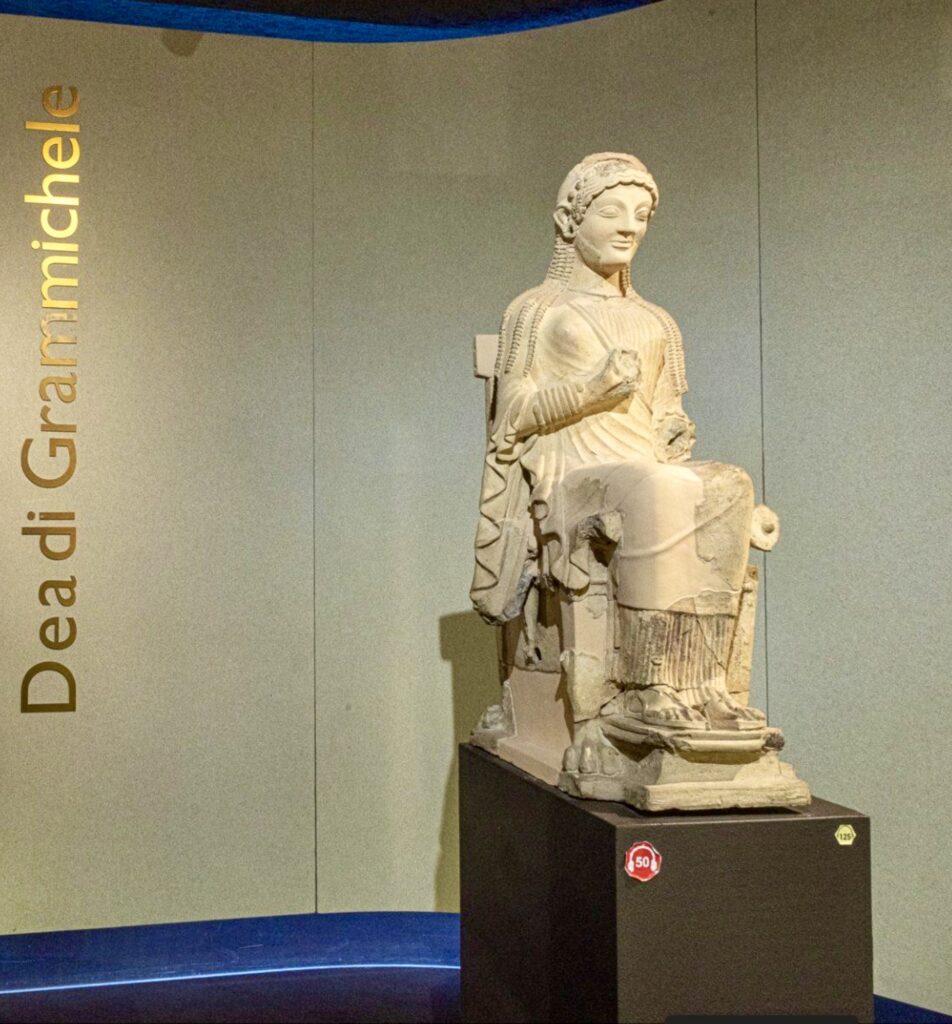
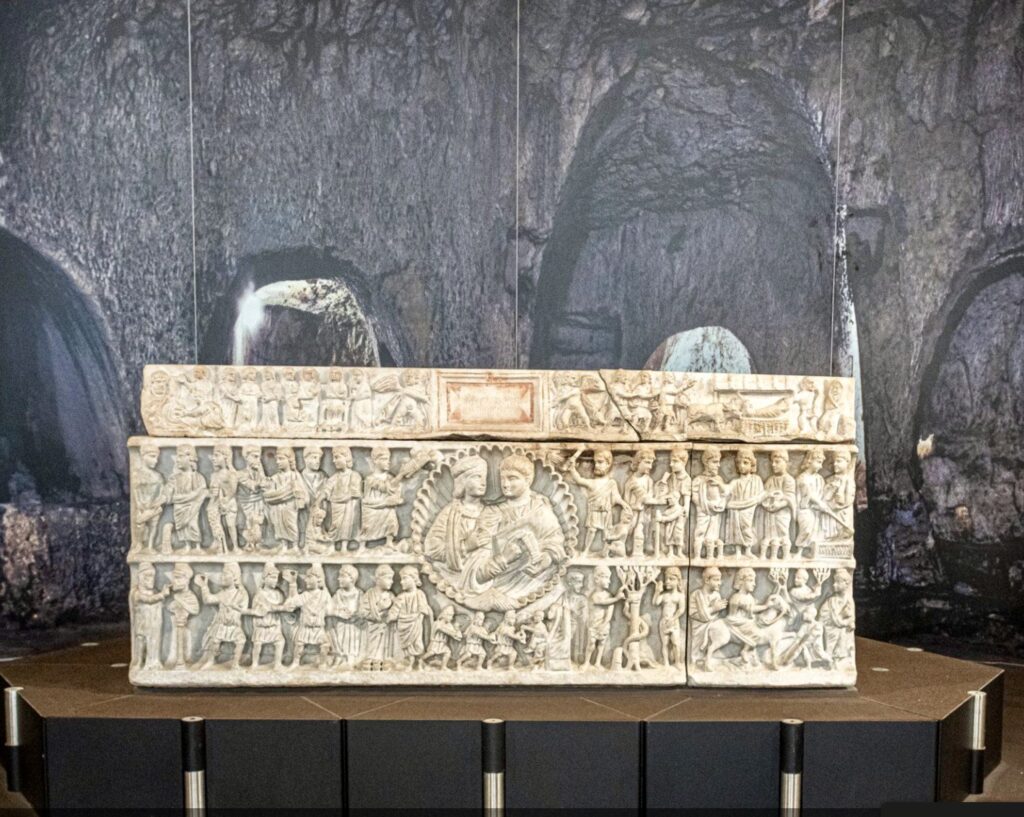
In the ceramics and sculptures section, you’ll discover a pantheon of Greco-Roman deities brought to life through artistry.
The museum’s must sees are the enigmatic Kourus di Megara, the evocative Sarcophagus of Adelphia, and the ethereal Venus Anadiomene.
Upon your visit, you’ll receive a helpful brochure featuring a museum map. The museum is organized in a roughly chronological order.
However, it’s worth noting that some of the display placards could use some more detail.
READ: Guide To Neapolis Archaeological Park in Syracuse
>>> Click here to book a ski the line ticket
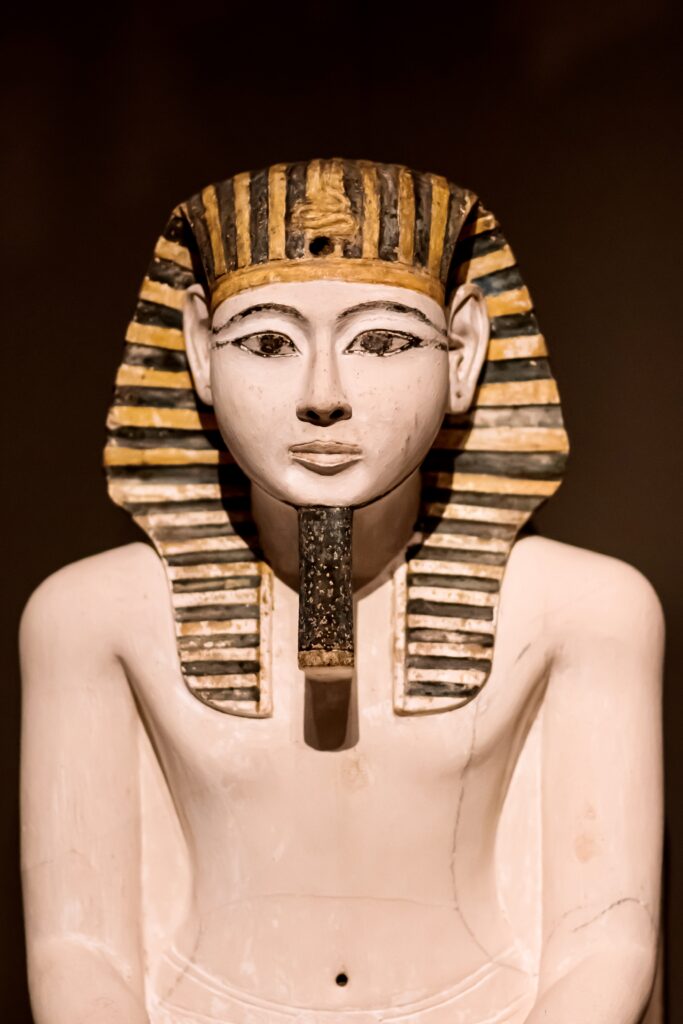
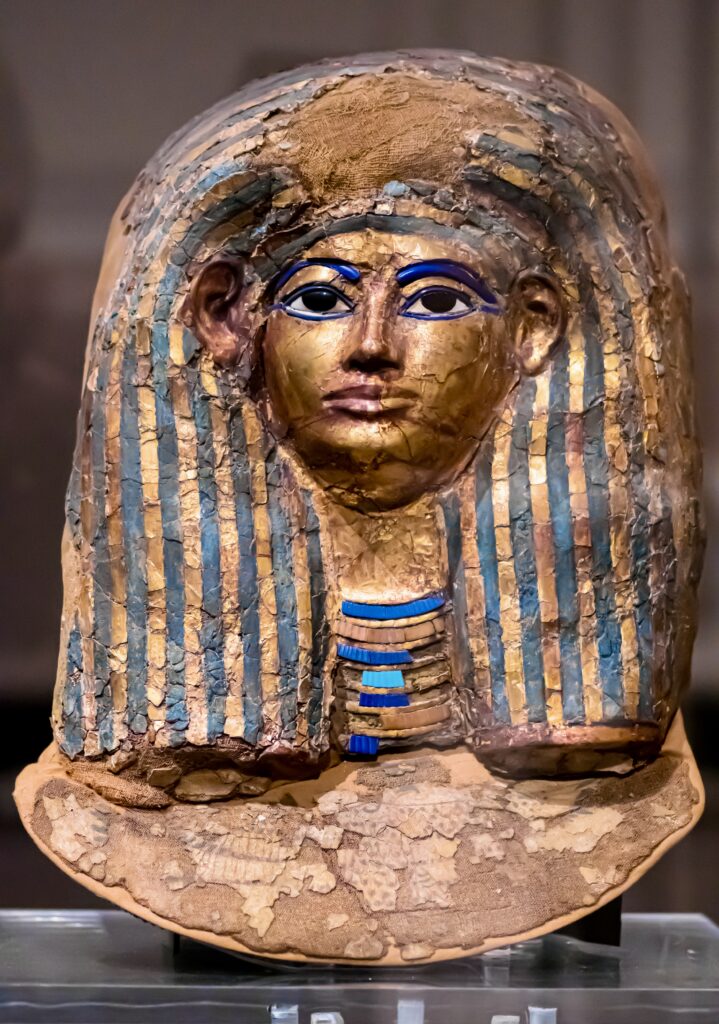
14. Egyptian Museum, Turin
The Egyptian Museum in Turin is a renowned archaeological institution housing a magnificent collection of Egyptian antiquities. Established in 1824 by King Charles Felix of Sardinia, it was the world’s first Egyptian museum. Some archaeologists say it’s the most important collection outside Cairo.
The museum has undergone a massive renovation. A series of escalators lead you on a path along the Nile over three levels of displays.
The collection features a vast array of artifacts, including mummies, statues, jewelry, and pottery. It offers visitors a captivating journey through Egypt’s rich past.
One of the highlights is the exquisitely painted wooden sarcophagi and mummies of Kha and Merit, an aristocratic couple whose tomb was discovered in 1906. It’s the most extensive, intact, and impeccably preserved collection of non-royal Egyptian burial artifacts ever unearthed.
>>> Click here to book a skip the line tour of the museum
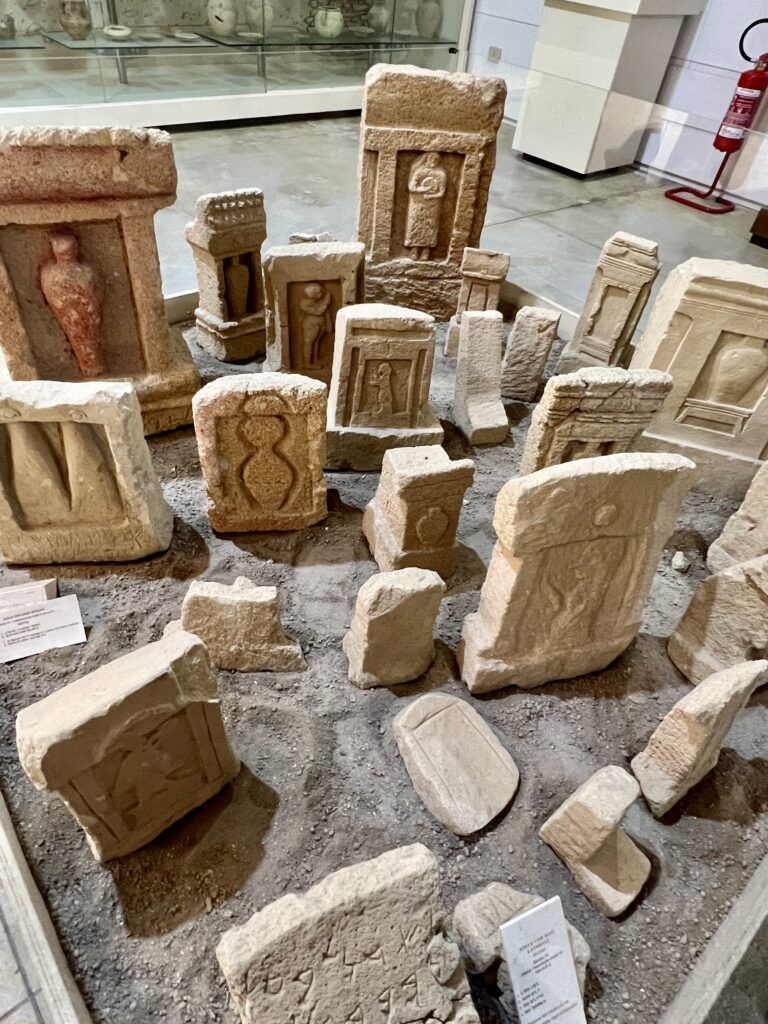
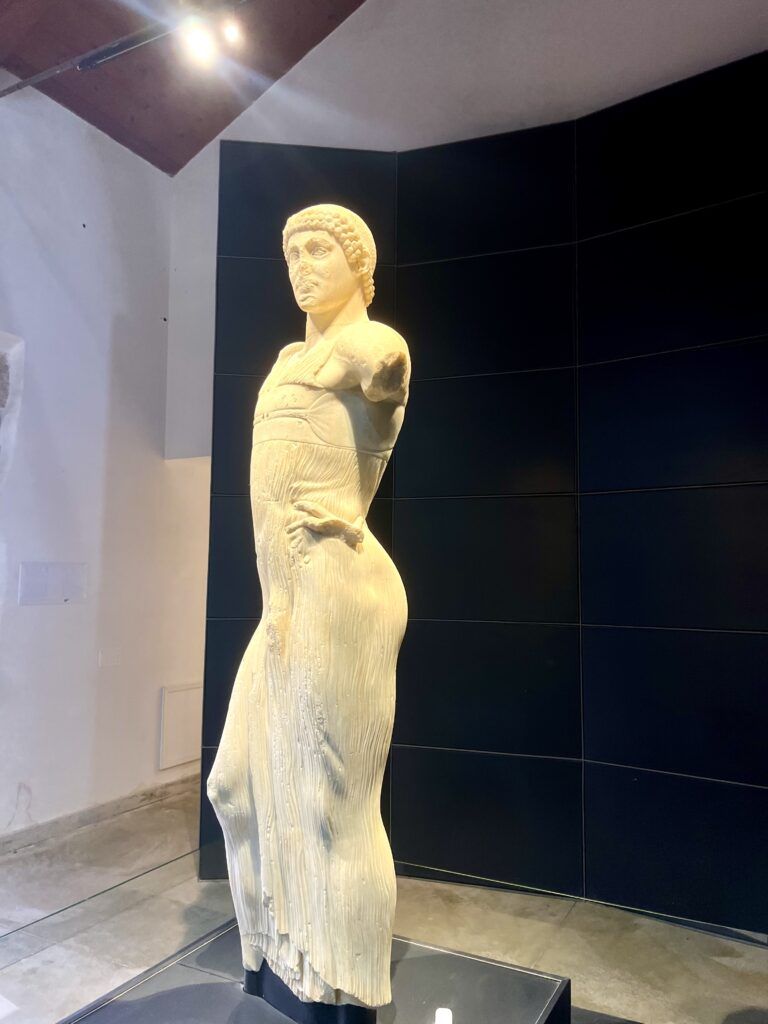
15. Whitaker Museum, Island of Mozia
The Island of Mozia off the coast of Trapani contains the ancient ruins of a once powerful Carthaginian city and a small, but excellent, archaeological museum.
The museum is named after its founder, Joseph Whitaker, an Englishman who purchased the island of Mozia in the late 19th century. He personally led excavations on the island.
The museum displays artifacts found on the island. They include Phoenician, Greek, and Roman objects, such as pottery, sculptures, jewelry, and tools.
The most famous exhibit is the Youth of Mozia, discovered in 1979. It’s a rare 5th century BC marble statue that’s believed to represent a young athlete. He’s clad in a wet tunic and is rather sensual.
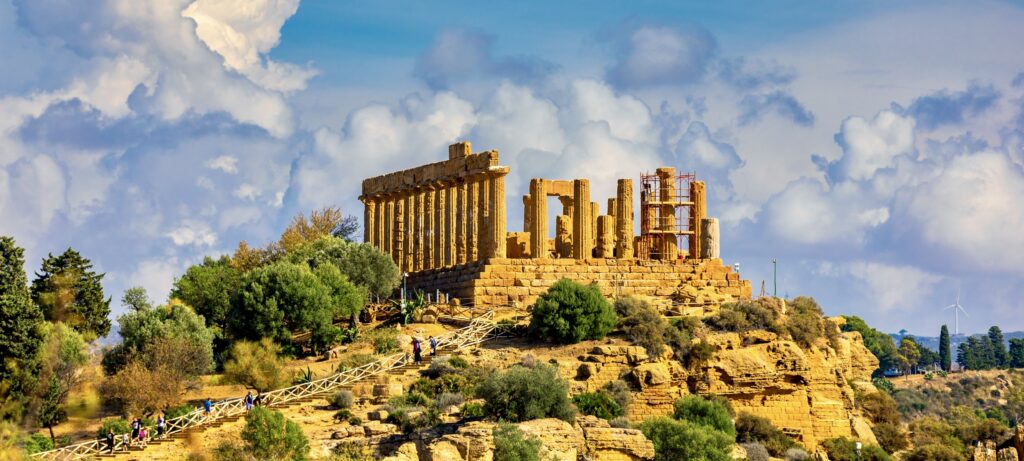
16. Pietro Griffo Regional Archaeological Museum, Agrigento
Agrigento’s Valley of the Temples is the world’s largest archaeological site and Sicily’s star attraction. Lying on the island’s southern coast, the UNESCO-listed complex is chock full of spectacular Greek ruins.
To get the full backdrop, you’ll want to visit the well-curated Archaeological Museum, situated in a 14th century Cistercian monastery. This museum ranks among Italy’s finest archaeological museums, providing a splendid introduction to the valley’s historical treasures.
Inside, you’ll find an exceptional collection of artifacts unearthed during excavations in the region, spanning over 2,000 years of history.
The exhibits are thoughtfully arranged across 18 rooms, offering a comprehensive journey through various epochs — the prehistoric era, the Mycenaean age, ancient Greece, and ancient Rome.
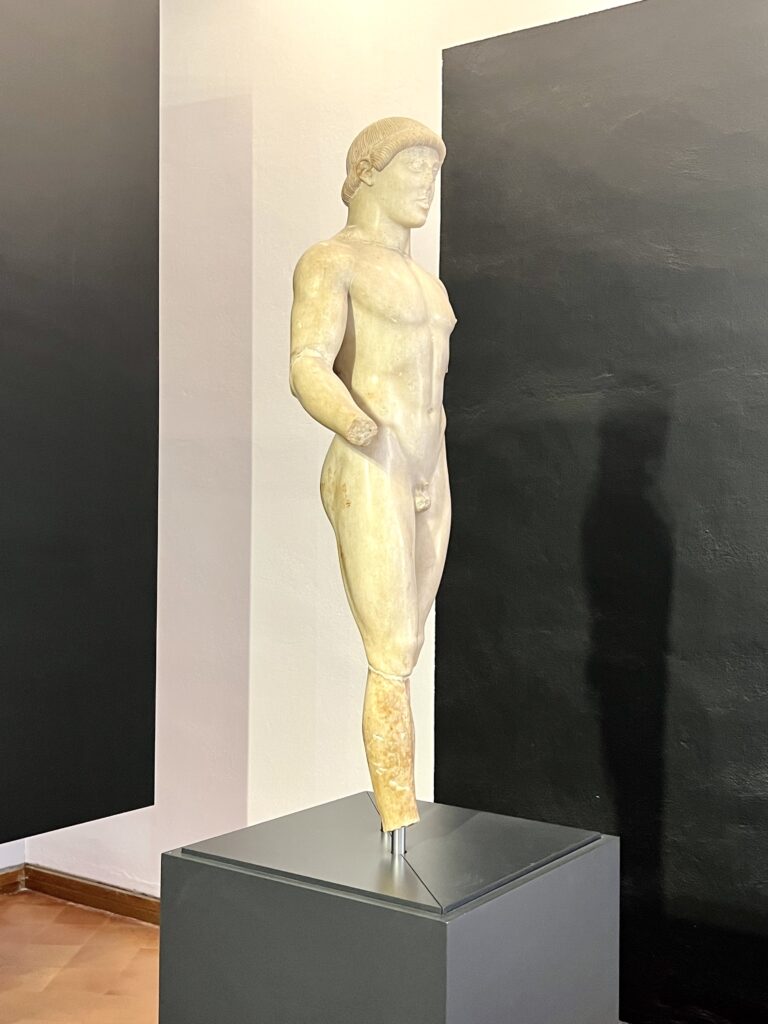
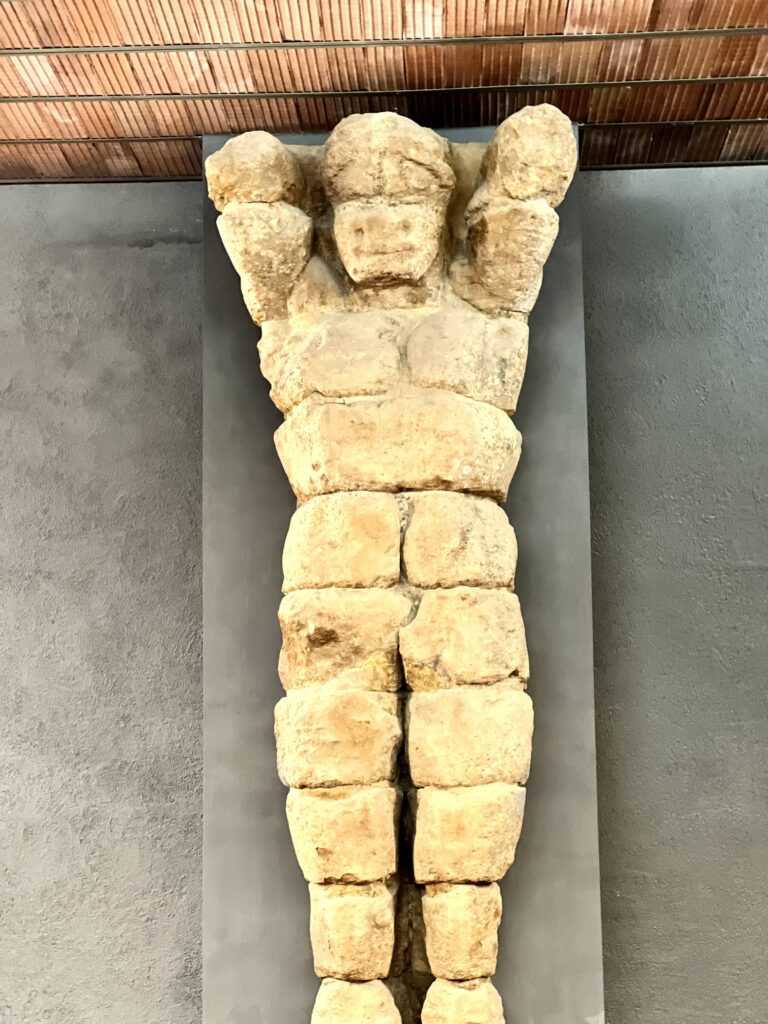
While exploring, keep an eye out for remarkable treasures like the well-preserved Greek vases from the 7th century B.C., statues, urns, kraters, mosaics, coins, weapons, and paintings. Of particular note are the Greek vases, showcasing both the “black figure” and “red figure” techniques.
Venture to the lower level’s main hall where you’ll be greeted by the museum’s centerpiece -– a magnificent reconstructed Telamon, or stone giant, originally from the Temple of Olympian Zeus. This colossal figure represents Atlas, the Titan condemned to carry earth on his shoulders for all eternity.
Be sure to step out onto the viewing terrace outside. It offers panoramic vistas that stretch across the valley, providing a breathtaking backdrop to the temples themselves.
I hope you’ve enjoyed my guide to Italy’s wonderful archaeological museums. You may enjoy these other Italy travel guides and resources:
- 12 Ways To Spend 1 Week in Italy
- 5 Ways To Spend 1 Week In Sicily
- 10 Days in Italy Itinerary
- 10 Day Tuscany Itinerary
- Tips For Visiting Italy
- 7 Day Road Trip From Venice To Milan
- 100+ Bucket List Places in Italy
- Historic Landmarks in Italy
- Most Beautiful Towns in Italy
- Best Museums in Rome
- Hidden Gems in Rome
- Best Museums in Florence
If Italy’s archaeological museums are on your bucket list, pin it for later.

